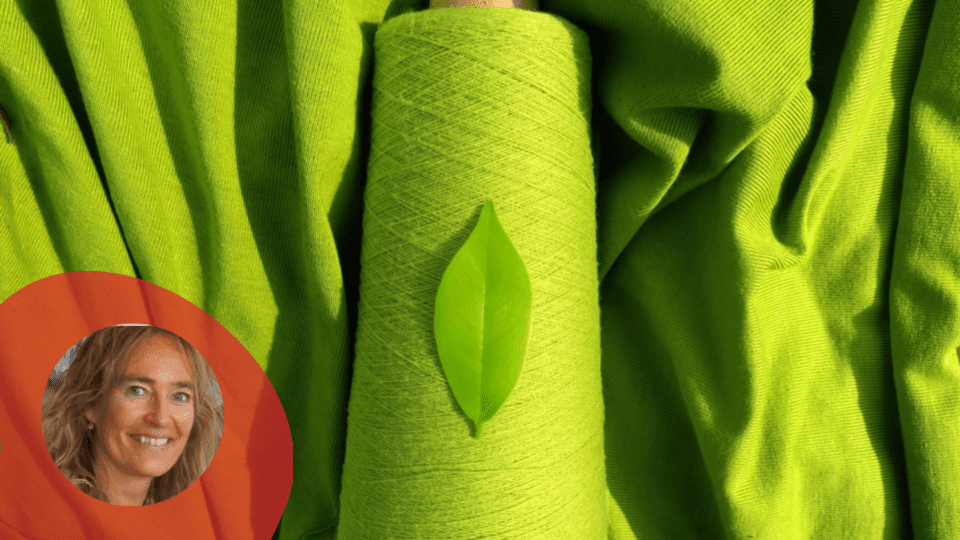The fashion industry has been questioned a lot about its environmental impact. It’s no secret that the production steps include high usage of scarce resources such as water. Now, the pressure is on companies to provide true transparency into the extended supply chain — commonly referred to as Tier 1-4 level of reporting, Scope 3, or Cradle-to-Gate.
Many companies claim to be sustainable and ethical, but can they prove it? As new regulations are enforced and consumers develop ever-more-sophisticated expectations around a brand’s environmental impact, fashion brands have to do more than claim they are compliant.
Given fashion’s impact on the environment and growing external pressures, retailers and manufacturers should consider effective and verifiable ways to support a sustainable future today.
A few ways fashion brands can be more sustainable now include:
1. Designing products that are sustainable and compliant.
Genuine sustainability starts with sourcing — before beginning any design work — and continues across all stages. The processes, materials, and production techniques of new collections all have environmental impacts, so access to impact measurement data and innovative thinking should be applied from start to finish.
Modern product lifecycle management (PLM) tools can help fashion brands manage their material composition details down to yarn and fiber levels with information about the country of origin, supplier, compliance and test standards. A strong PLM can also help companies engage with partners in real time to manage the tiered supply chain, not just the main tier 1 supplier. With smarter sourcing and designs, products can last longer and potentially get generations of use.
2. Extending a product’s lifecycle by designing with disassembly in mind.
Unfortunately, many products end up in a landfill at the end of their lifecycle. Sometimes, a garment may be thrown out prematurely because of a rip or stain. Fashion brands should consider ways to extend the lifecycle and offer services around existing products, such as repair, rental, resell and recycling services. Integrating with resell platforms can help leftover stock get sold rather than wasted.
GAMA Recycle Sustainable Technologies, the largest recycled-plastic yarn and fiber producer in the world, gives recycled goods a new life and reduces environmental pollution by replacing virgin materials with regenerated yarn and cotton, for example. GAMA produces up to 100 tons of recycled polyester fibers daily and relies on modern ERP software to support end-to-end collaboration across its supply chain. A modern, cloud-based enterprise application platform can help manage a wide range of business models to support a circular economy and offers fashion companies multiple options to promote the brand experience.
Brands can also be more sustainable by using quality fabrics and sustainable packaging for their designs. This may lead to increased prices to the consumer, but communicating the cost as added value, lengthening the lifespan of products and supporting sustainability may pay off with customers in the long run.
In a recent McKinsey survey, 60% of participants report going out of their way to recycle and purchase products in environmentally friendly packaging; 67% of consumers surveyed consider the use of sustainable materials to be an important purchasing factor, and 63% consider a brand’s promotion of sustainability in the same way. To satisfy these consumers, fashion brands will have to find ways to be more sustainable along the extended fashion value chain, from cotton to consumer, and prove it with data.
3. Consolidating and publishing sustainability data.
In addition to introducing lower-impact products and processes, fashion brands need to offer visibility and transparency around their sustainability programs to stakeholders, consumers and regulatory authorities. Specific sustainability-related data such as water use, carbon footprint, energy use and product composition should be collected and managed, then evaluated with a business intelligence platform.
To share relevant information, fashion brands can use digital product passports to store data. By scanning the style tag or QR code on a piece of clothing, consumers can access sustainability information such as how the product was made, its composition, end-of-life options and transportation/CO2 footprint.
The process of measuring a brand’s environmental impact across Tier 1-4 can be complex and time-consuming, and often there are data gaps that need to be filled. But experts can help. Partnering with dedicated impact measurement solutions can help brands offer true transparency for their products and ensure they meet consumer and governmental requirements.
True sustainability requires the collection of data and visibility to all levels of the production supply chain, as well as by designing products from the start that are made to last longer and have recycling value. Consumers are becoming more and more environmentally conscious, so fashion brands need to adopt sustainable practices now. Transitioning from traditional business models to circular fashion does require operational transformation, but it has the potential to pave new pathways to economic and environmental growth.
To begin this journey, brands must start taking sustainable leaps today.
Helene Behrenfeldt is the Director of Fashion Strategy at Infor, responsible for providing industry and strategy guidance to marketing, product development and sales based on the unique needs and upcoming trends of the fashion industry.




